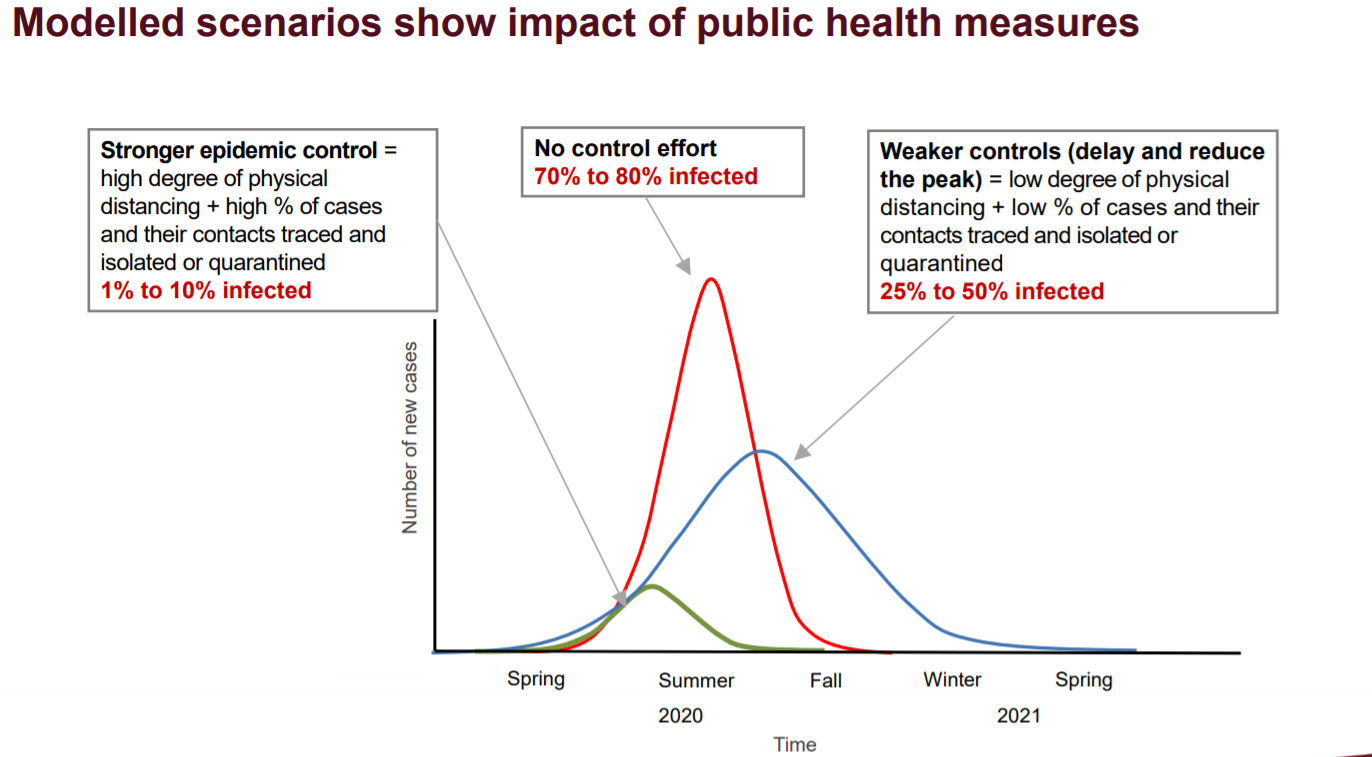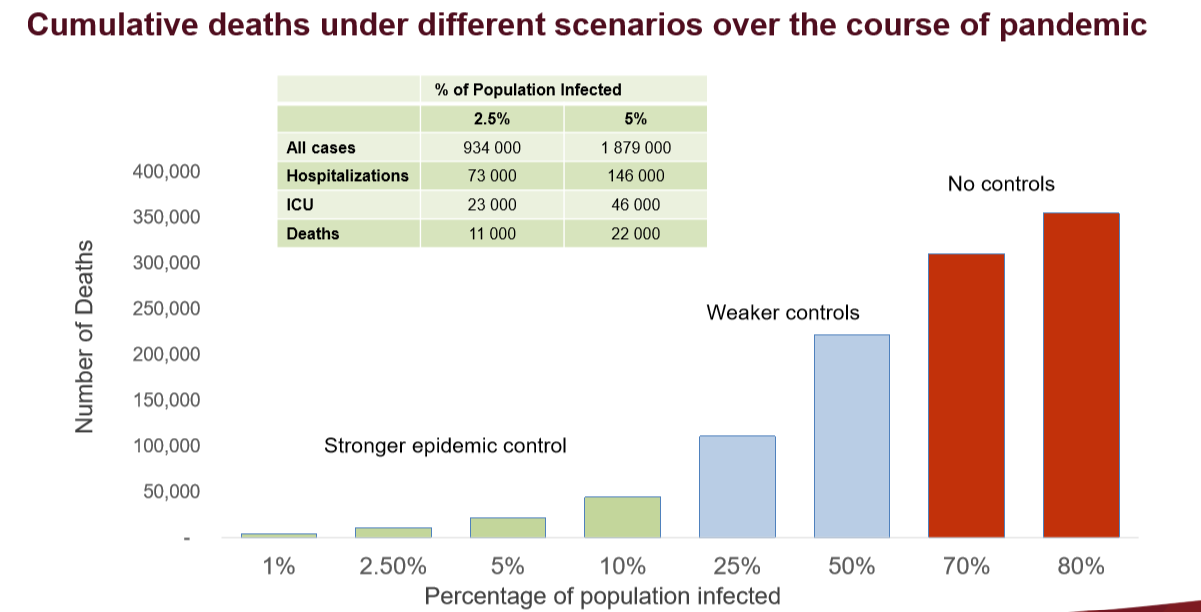Federal health officials are projecting there could be between 11,000 and 22,000 deaths in Canada over the course of the COVID-19 pandemic.
And that’s the best case scenario under strong epidemic control measures, which assumes that only up to five per cent of Canadians get COVID-19.
In the short term, there could be nearly 32,000 cases of COVID-19 and between 500 and 700 deaths in Canada by April 16 even with relatively strong epidemic control measures in place, officials said.
The worst case scenario – with no epidemic control measures – could see up to 80 per cent of Canadians eventually getting COVID-19 and more than 350,000 deaths.
The figures came Thursday morning as officials released modelling on how the COVID-19 crisis could unfold in the country.
‘Not a crystal ball’

Source: Public Health Agency of Canada
“Data and models can help Canadians see how our collective efforts … can determine the trajectory of Canada’s COVID-19 pandemic,” said Canada’s Chief Public Health Officer Dr. Theresa Tam.
“Models are not a crystal ball.”
Officials laid out three different potential scenarios based on strong controls (one-10 per cent of the population infected), weaker controls (25-50 per cent infected) and no controls (70-80 per cent infected).
 The models show that if only 2.5 per cent of Canada’s population is infected, it would result in 934,000 COVID-19 cases, of which 73,000 would require hospitalization, 23,000 would be placed in Intensive Care Units (ICUs) and 11,000 will die.
The models show that if only 2.5 per cent of Canada’s population is infected, it would result in 934,000 COVID-19 cases, of which 73,000 would require hospitalization, 23,000 would be placed in Intensive Care Units (ICUs) and 11,000 will die.
If the percentage of the population infected by COVID-19 hits the five-per-cent mark, it would result in 22,000 deaths.
The number of deaths would double to 44,000 if the infection rate reaches 10 per cent.
“These stark numbers tell us we must do everything in our power to stay in the control model,” Tam said.
Canada current relatively strong measures mean that the country stands a good chance to stay in the lower death toll estimate, she added.
‘A long way to go’
The pandemic is still in the early stages in Canada and it’s hard to estimate when it will peak, Tam said.
“We have a long way to go in the whole trajectory of this pandemic,” Tam said.
Deputy Chief Public Health Officer Dr. Howard Njoo said it appears that the first wave of the virus will last until the summer.
He warned, however, that the virus could reappear again as soon as public health measures are relaxed.
Tam reiterated time and again how crucial it is for Canadians to cut down on non-essential travel within Canada and internationally to reduce the number of infections in Canada. She pointed out that the decision to lift some of the lockdown measures will also depend on the situation in the U.S.
Deputy Prime Minister Chrystia Freeland said it “would be foolhardy in the extreme” to make long-term predictions about when travel restrictions could be lifted.
Health Minister Patty Hajdu said Canadian officials are carefully studying the countries that are ahead of Canada along their pandemic curve and have begun lifting some of the restrictions to learn from their experience.
COVID-19 in Canada Technical Briefing by Levon Sevunts on Scribd







For reasons beyond our control, and for an undetermined period of time, our comment section is now closed. However, our social networks remain open to your contributions.